TP Link TL-SG2016P Handleiding
TP Link
Niet gecategoriseerd
TL-SG2016P
Bekijk gratis de handleiding van TP Link TL-SG2016P (2 pagina’s), behorend tot de categorie Niet gecategoriseerd. Deze gids werd als nuttig beoordeeld door 218 mensen en kreeg gemiddeld 4.8 sterren uit 109.5 reviews. Heb je een vraag over TP Link TL-SG2016P of wil je andere gebruikers van dit product iets vragen? Stel een vraag
Pagina 1/2

© 2022 TP-Link 7106509860 REV3.1.3
JetStream Gigabit Smart PoE+ Switch
1. To access the management page of the switch, open a browser and type
the switch’s IP address in the address eld, then press the Enter key.
If the switch obtains IP address from the DHCP server (typically a router), nd
the switch’s IP address on the DHCP server.
If not, use the default IP address to launch the switch’s 192.168.0.1
management page.
Note: Make sure the switch and computer are in the same subnet.
2. admin Enter for both the username and password in the lower case letters
to log in. The rst time you log in, change the password to better protect
your network and devices.
3. After a successful login, the main page will appear. You can click the menus
on the top side and left side to congure the corresponding functions.
Note:
1. PoE ports can also connect to non-PoE devices, but only transmit data.
2. Maximum PoE power is 30 W for each PoE port, and 62 W (for TL-SG2008P)/61 W (for TL-SG2210P)/120W (for TL-SG2016P) for all PoE ports.
3. PoE budget calculations are based on laboratory testing. Actual PoE power budget is not guaranteed and will vary as a result of client limitations and environmental factors.
Installation Guide
Conguration
Connection
For the detailed congurations, refer to the User Guide and CLI Guide. The
guides can be found on the download center of our ocial website:
https://www.tp-link.com/support/download/.
Method 1: Standalone Mode
Switch PC
In Standalone Mode, use a computer to congure and manage the switch.
The switch supports two conguration methods:
Standalone Mode: Congure and manage the switch singly.
Controller Mode: Congure and manage the network devices centrally. It is recommended in the large-scale network, which consists of mass devices such as
access points, switches, and gateways.
Note: When the switch is changed from Standalone Mode to Controller Mode, congurations of the switch will be lost. For details, refer to the related documents on the download center of our
ocial website: https://www.tp-link.com/support/download/.
For simplicity, we will take TL-SG2210P for example throughout the Guide.
Ethernet Ports (1–8)
PC
SFP Slots
IP Camera AP IP Phone
PoE Devices
DC Power Adapter
AC Power Cord
Internet
1
2
3
LED
Power On/O: Power on/o
System Flashing: System running normally
On/O: System running abnormally
Link/Act
Green On: Running at 1000 Mbps, but no activity
Green Flashing: Running at 1000 Mbps and transmitting or receiving data
Yellow On: Running at 100/10 Mbps, but no activity.
Yellow Flashing: Running at 100/10 Mbps and transmitting or receiving data
O: No connected device
SFP1/SFP2
(for TL-SG2210P)
Green/Yellow On: Running at 1000/100 Mbps
Flashing: Transmitting/receiving data
O: No connected device
PoE Status
(For Port 1-4 of TL-SG2008P/
Port 1-8 of TL-SG2210P/
Port 1-8 of TL-SG2016P)
On: Providing PoE power
Flashing: Current-overload/Short-circuit/Connected to a non-standard PD/Power
exceeded the user-dened value
O: Not providing PoE Power
PoE Max
For TL-SG2008P
On: 55 W ≤ Total power supply < 62 W
Flashing: Total power supply keeps ≥ 55 W more than 2 minutes
O: Total power supply < 55 W
For TL-SG2210P
On: 54 W ≤ Total power supply < 61 W
Flashing: Total power supply keeps ≥ 54 W more than 2 minutes
O: Total power supply < 54 W
For TL-SG2016P
On: 113 W ≤ Total power supply < 120 W
Flashing: Total power supply keeps ≥ 113 W more than 2 minutes
O: Total power supply < 113 W
Indication

Method 2: Controller Mode
Switch
Router
Clients
EAP EAP EAP
Controller
Omada Software Controller
running on the Host PC
Choose from the following two types of Omada Controller:
On a PC with Windows OS or Linux OS, download the Omada Software Controller
from https://www.tp-link.com/support/download/omada-software-controller/.
Then run the file and follow the wizard to install and launch the Omada Software
Controller. To manage your devices, Omada Software Controller needs to keep
running on your computer.
Type 2: Omada Software Controller
Switch
Router
Clients
Omada Hardware Controller EAP EAP EAP
(OC200/OC300)
Note:
Before you start, be sure to your devices according to power up and connect
the topology figure.
A DHCP server (typically a router with DHCP function enabled) is required to
assign IP addresses to the EAPs and clients in your local network.
Omada Controller must have network access to your Omada devices (the
router, switch, and EAPs) in order to find, adopt, and manage them.
Omada Hardware Controller (OC200/OC300) is a good alternative if you have no
spare PC to keep running Omada Software Controller in the network. It needs to
be purchased additionally. For more details, refer to the Installation Guide of
OC200/OC300.
Type 1: Omada Hardware Controller (OC200/OC300)
1. Open the Omada Controller’s web page.
Launch the Omada Software Controller on your PC. After the initiation process,
the controller automatically opens its web page. If not, click Launch a Browser
to Manage the Network.
For Omada Software Controller
As Omada Hardware Controller gets its IP address from the DHCP server of
the router, we don’t know its IP address explicitly. However, we can nd it out
on the router’s DHCP client list.
For Omada Hardware Controller
Choose from the following two types of Management Interface:
Type 1: Via Web Browser
1. Download the TP-Link Omada App on your mobile device. It can be downloaded
from App Store or Google Play:
3. After quick setup, login page appears. Enter the username and password you
have created and click Log in. Then you can further configure the controller.
2. On the Omada Controller’s page, follow the wizard to complete the quick setup.
a. You need rst nd the IP address of the router. Open the command line on
your PC and enter . In the result list, find the ipconfig Default Gateway, which
is also the IP address of the router.
c. Enter the IP address of your controller in address bar to open its web page.
b. Launch a web browser and enter the IP address of the router. Log into the
router’s web page, and both the username and password are admin by
default. Then go to Network > LAN > DHCP Client List to find the IP address
of your controller according to its MAC address.
4. (For Remote Management) You can remotely access and manage your
controller via Omada Cloud Service.
Note: Before you start, make sure that both your controller and your PC can
access the internet.
For Omada Software Controller, refer to its User Guide
b. Launch a web browser and enter https://omada.tplinkcloud.com in the
address bar. Enter your TP-Link ID and password to log in. Click + Add
Controller Hardware Controller and choose to add your controller.
a. Make sure is enabled on your controller. By default,Cloud Access Cloud
Access is enabled. Make sure that the Cloud LED is flashing slowly.
For Omada Hardware Controller
Type 2: Via Omada App
2. Launch your Omada App and configure the controller at a local site or remote
site.
a. Connect your mobile device to the EAP by using the default SSID (format:
TP-Link_2.4GHz/5GHz_XXXXXX) printed on the label at the bottom of the
product.
b. Launch Omada App and go to Local Access +, tap the button on the
upper-right corner to add the controller. Then you can further congure
the controller.
Local Management
a. Make sure that is enabled on your controller and your Cloud Access
controller has been bound with your TP-Link ID.
b. Launch Omada App and log in with your TP-Link ID. Then go to Cloud
Access. A list of controllers that have been bound with your TP-Link ID will
appear. Then you can further configure the controller.
Note: Before you start, make sure that both your controller and mobile device
can access the internet.
For Omada Software Controller
a. Make sure that is enabled on your controller. By default, Cloud Access
Cloud Access is enabled. Make sure that the Cloud LED is flashing slowly.
b. Launch Omada App and log in with your TP-Link ID. Then go to Cloud
Access. Tap the + button on the upper-right to add your controller. Then
you can further configure the controller.
For Omada Hardware Controller
Remote Management
Download Omada App
or
Scan for Omada App
TP-Link hereby declares that the device is in compliance with the essential requirements
and other relevant provisions of directives 2014/30/EU, 2014/35/EU, 2009/125/EC,
2011/65/EU and (EU)2015/863.
The original EU declaration of conformity may be found at
https://www.tp-link.com/en/support/ce/
EU Declaration of Conformity
For technical support and other information, please visit
https://www.tp-link.com/support, or simply scan the QR code.
Safety Information
Keep the device away from water, re, humidity or hot environments.
Do not attempt to disassemble, repair, or modify the device. If you need service, please
contact us.
Do not use damaged charger or USB cable to charge the device.
Do not use any other chargers than those recommended.
Adapter shall be installed near the equipment and shall be easily accessible.
Place the device with its bottom surface downward.
The plug on the power supply cord is used as the disconnect device, the socket-outlet
shall be easily accessible.
TP-Link hereby declares that the device is in compliance with the essential requirements
and other relevant provisions of the Electromagnetic Compatibility Regulations 2016 and
Electrical Equipment (Safety) Regulations 2016.
The original UK declaration of conformity may be found at
https://www.tp-link.com/support/ukca/
UKCA Declaration of Conformity
Product specificaties
| Merk: | TP Link |
| Categorie: | Niet gecategoriseerd |
| Model: | TL-SG2016P |
Heb je hulp nodig?
Als je hulp nodig hebt met TP Link TL-SG2016P stel dan hieronder een vraag en andere gebruikers zullen je antwoorden
Handleiding Niet gecategoriseerd TP Link
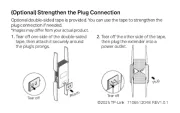
3 Juli 2025
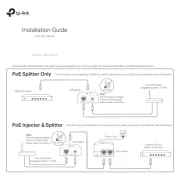
7 Mei 2025

7 Mei 2025
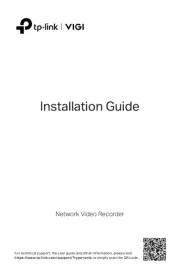
7 Mei 2025
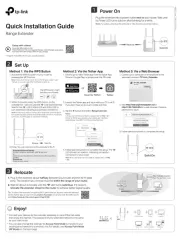
2 Mei 2025

2 Mei 2025

2 Mei 2025

2 Mei 2025
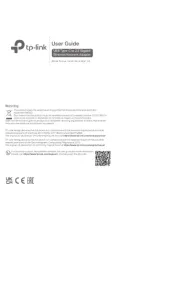
14 April 2025
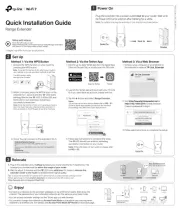
9 Maart 2025
Handleiding Niet gecategoriseerd
- Kindercraft
- Rocstor
- Megarevo
- Svan
- Value
- Bricasti Design
- EtherWAN
- Watson
- Hilti
- Orbit
- Nitek
- Veise
- IASUS
- ClipEyz
- Phoenix
Nieuwste handleidingen voor Niet gecategoriseerd
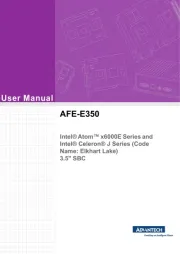
31 Juli 2025
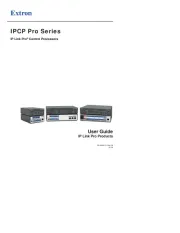
31 Juli 2025

31 Juli 2025

31 Juli 2025

31 Juli 2025
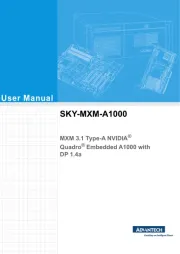
31 Juli 2025

31 Juli 2025

31 Juli 2025
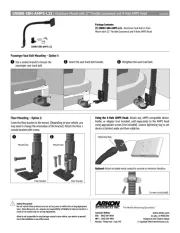
31 Juli 2025
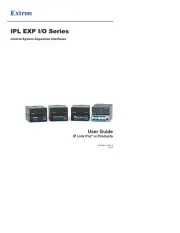
31 Juli 2025